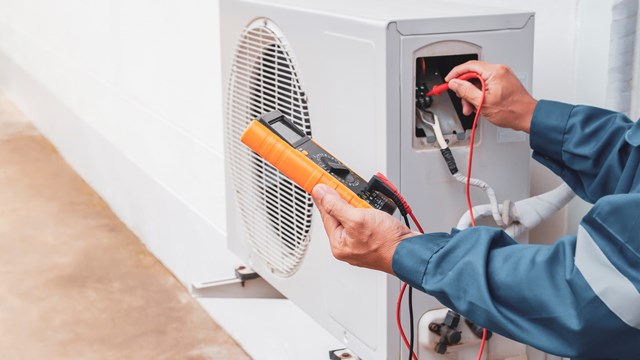
Two research and development projects are currently underway in Manhattan where the New York State Energy Research and Development Authority (NYSERDA), the state agency that promotes energy efficiency, is supporting the development and installation of groundbreaking smart air conditioners and heat pumps for smart multifamily buildings. Both projects, one in an Upper West Side Mitchell-Lama cooperative and one in a downtown all-electric multi-building cooperative complex, integrate new smart air conditioners or heat pumps via an existing advanced electrical submetering system to a smart building load management system. These two projects have similar objectives: the development of equipment that will improve energy efficiency, reduce electric bills and provide the capability for participation in utility and state sponsored demand response and curtailment programs. Demand response programs reduce the demand on the Con Edison grid when necessary and offer buildings financial incentives in return for their participation. Since the demand charge in master metered buildings represents a significant component of the total electric bill, the use of the smart air conditioners or heat pumps also provides each building the ability to further reduce its demand charge. Demand response capability is strongly advocated by both Con Edison and NYSERDA to provide a mechanism to relieve the stress on the utility grid during high demand periods, thereby reducing the likelihood of an interruption of power.
The Air Up There
At Jefferson Towers (pictured), an Upper West Side cooperative located on Columbus Avenue and 94th Street, approximately 230 through-the-wall smart air conditioners were installed in 190 apartments. The new units are wirelessly networked to the building’s existing submetering system that was installed in 2003. The smart air conditioners are designed to permit building management to automatically reduce the building’s peak electric demand in response to event days called by either Con Edison or the New York State Independent System Operator (ISO) by issuing curtailment commands to the smart air conditioners over the wireless communications inherent in the building’s submetering system. Because master metered multifamily buildings pay for electricity based not only on the number of kilowatt-hours (kWh) used in a given month, but also based on its recorded peak demand (KW) this smart building system can result in bill savings. The combination of a higher energy efficiency ratio (EER) in the new air conditioners, demand reduction during summer operation and incentive payments provides the building with an economic benefit as well.
The Jefferson Towers smart air conditioners were recently installed and slated to undergo testing and evaluation during the summer of 2011. When questioned why Jefferson Towers agreed to participate in this project, Philip Olivetti, president of the Board of Directors stated: “Like most buildings, we are always looking for ways to reduce costs and generate revenue. The smart air conditioning system allows us to do both at the same time, by improving energy efficiency and allowing us to participate in demand response programs”.
At West Village Houses, an all-electric 42 building apartment complex containing 420 apartments, through-the-wall air conditioners are being replaced with a networked system of smart heat pumps in four buildings served by a single Con Edison master meter utilizing the identical advanced electrical submetering system as installed in Jefferson Towers. The submetering system at West Village Houses became operational in early 2010.
In addition to facilitating demand response, the smart heat pumps will replace the function of electric resistance baseboard heaters, boosting energy efficiency dramatically during the heating season as the coefficient of performance (COP) of the heat pumps are rated at 2.7 compared to the COP of the baseboard heater at 1.0. This means that the heat pumps emit nearly three times the heat per unit of electricity compared to the baseboard heaters when outside temperatures are between 40o F and 55o F, common conditions in the New York City climate. Accordingly, the economic benefit of this smart building project is substantial due to significantly lower electricity usage during the winter, nominal reduction during the summer due to higher EERs of the cooling function of the heat pumps, lower summer time peak demand charges due to smart building control, demand reduction during the shoulder months and the ability to utilize the fleet control capability to increase demand response incentive payments from Con Edison and the ISO. Anticipated annual cost savings per apartment are projected at approximately $350 not including any additional revenues received from participation in demand response programs.
Being Smart
The West Village Houses smart heat pumps are being installed in a four building section of this 42 building complex (pictured) for demonstration purposes. The project results will be available upon the completion of the evaluation during 2012. This demonstration project provides a significant option for other all-electric buildings to further reduce their energy costs.
The Jefferson Towers project is being managed by Jordan Dentz, of the building energy research and consulting firm The Levy Partnership, in Manhattan. Herbert E. Hirschfeld, P.E., located in Glen Cove, New York is the NYSERDA contractor conducting the West Village Houses project. Both researchers are collaborating with each other on their respective projects, coordinating technologies and results. The submetering system provider is Intech 21 located in Port Washington, New York. The heat pumps for West Village Houses are provided by Islandaire located in East Setauket, New York and the new air conditioners installed in Jefferson Towers are also provided by Intech 21.
Over the next year the projects will be fully evaluated, with results being published in print and on the web. In additional to technical articles and conferences, the project organizers plan to publish case studies and conduct workshops for buildings interested in this technology. More information will be available at www.submeteronline.com and www.levypartnership.com.
Herbert E. Hirschfeld, P.E., CEM is an independent consulting engineer. Jordan L. Dentz is a senior project manager with The Levy Partnership, Inc. of NYC.






Leave a Comment